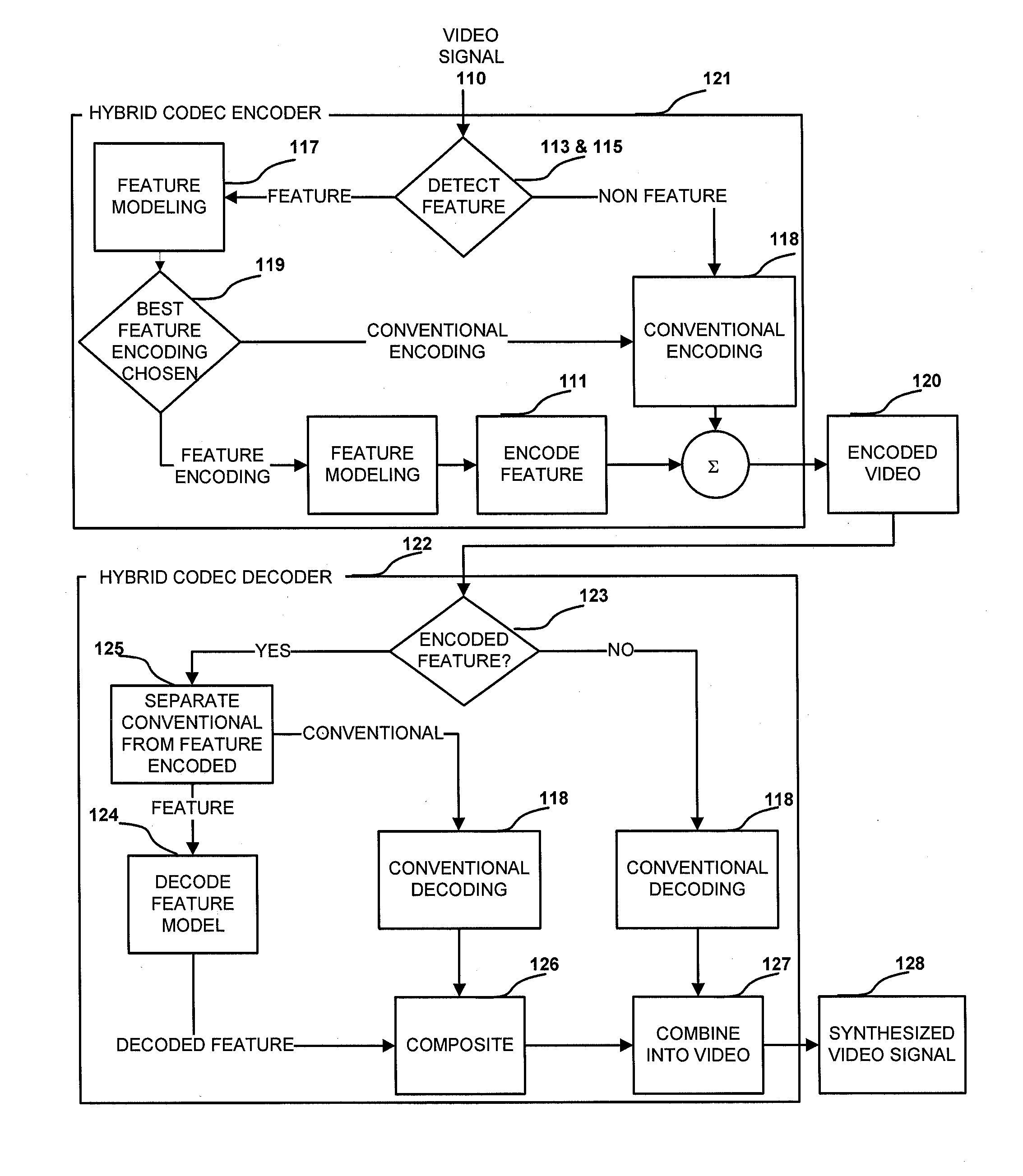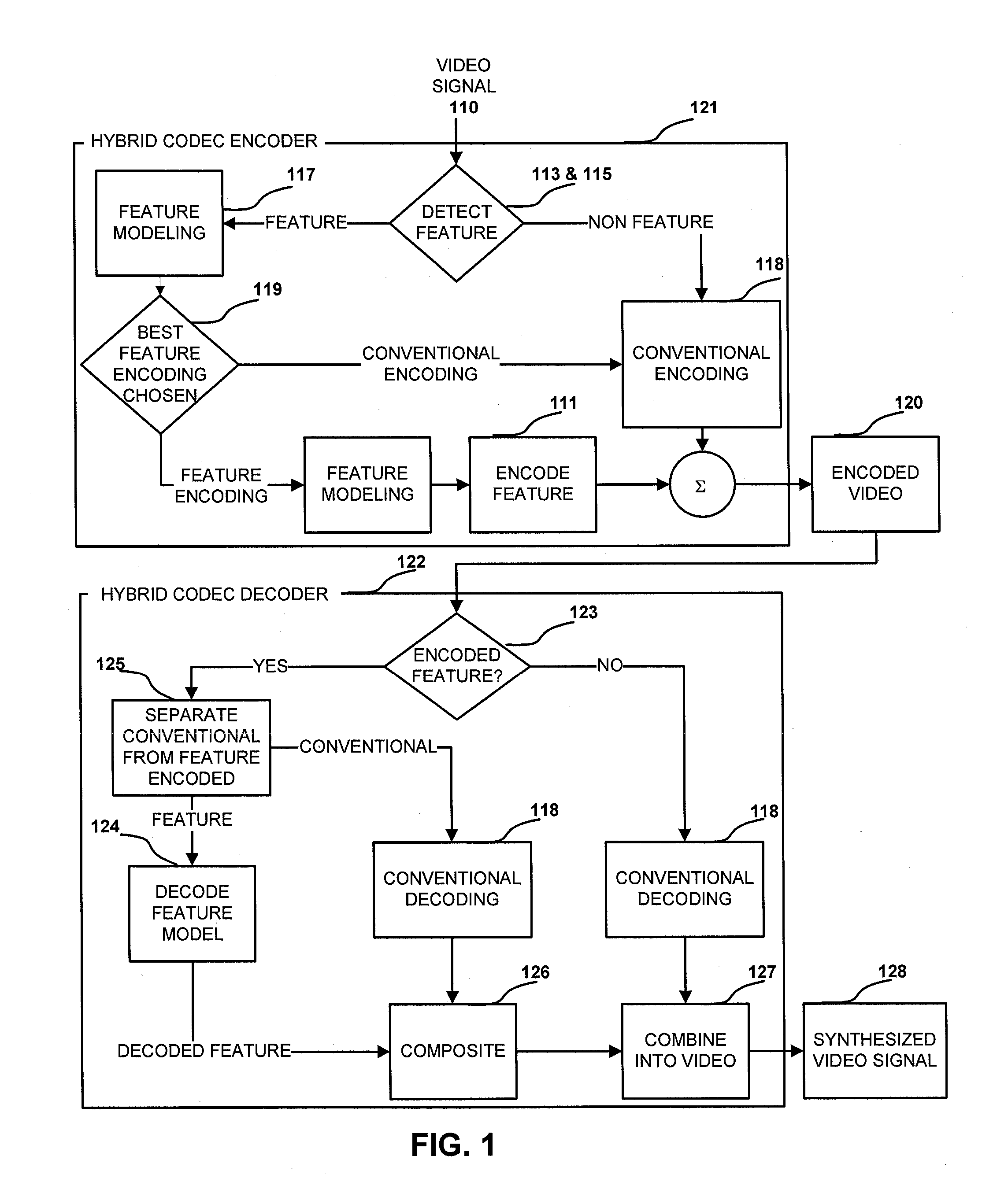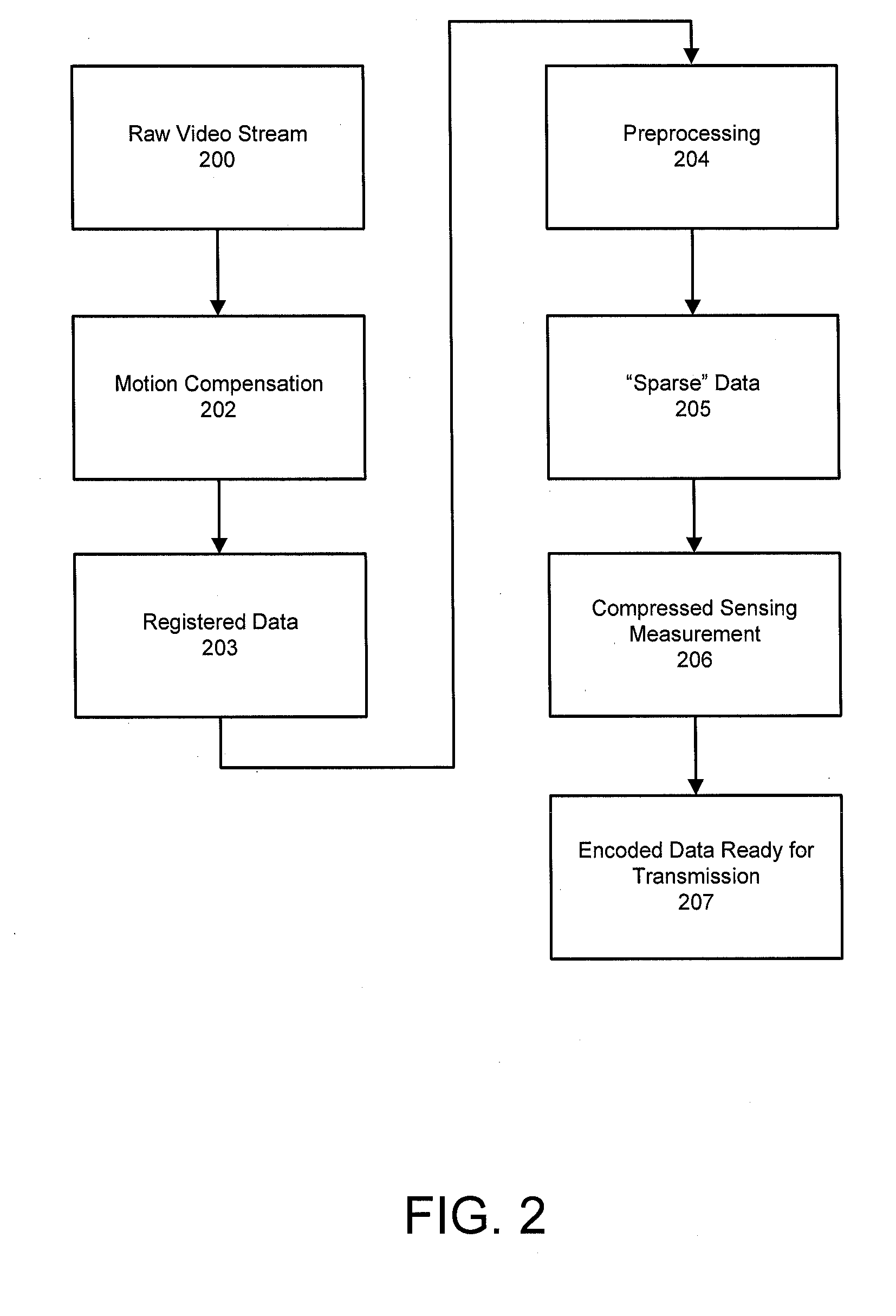Feature-Based Video Compression
a video compression and feature technology, applied in the field of feature-based video compression, can solve the problems of prohibitively computationally inefficient l1m in practice, inability to use high computational efficiency when high computational efficiency is required, and inability to meet the requirements of high computational efficiency, etc., and achieve the effect of increasing the number of pels
- Summary
- Abstract
- Description
- Claims
- Application Information
AI Technical Summary
Benefits of technology
Problems solved by technology
Method used
Image
Examples
Embodiment Construction
Introduction Section
[0055]A description of example embodiments of the invention follows. The teachings of all patents, published applications and references cited herein are incorporated by reference in their entirety.
Digital Processing Environment and Network
[0056]Preferably, the invention is implemented in a software or hardware environment. One such environment is shown in FIG. 3, which illustrates a computer network or similar digital processing environment in which the present invention may be implemented.
[0057]Client computer(s) / devices 350 and server computer(s) 360 provide processing, storage, and input / output devices executing application programs and the like. Client computer(s) / devices 350 can also be linked through communications network 370 to other computing devices, including other client devices / processes 350 and server computer(s) 360. Communications network 370 can be part of a remote access network, a global network (e.g., the Internet), a worldwide collection of ...
PUM
 Login to View More
Login to View More Abstract
Description
Claims
Application Information
 Login to View More
Login to View More - R&D
- Intellectual Property
- Life Sciences
- Materials
- Tech Scout
- Unparalleled Data Quality
- Higher Quality Content
- 60% Fewer Hallucinations
Browse by: Latest US Patents, China's latest patents, Technical Efficacy Thesaurus, Application Domain, Technology Topic, Popular Technical Reports.
© 2025 PatSnap. All rights reserved.Legal|Privacy policy|Modern Slavery Act Transparency Statement|Sitemap|About US| Contact US: help@patsnap.com



